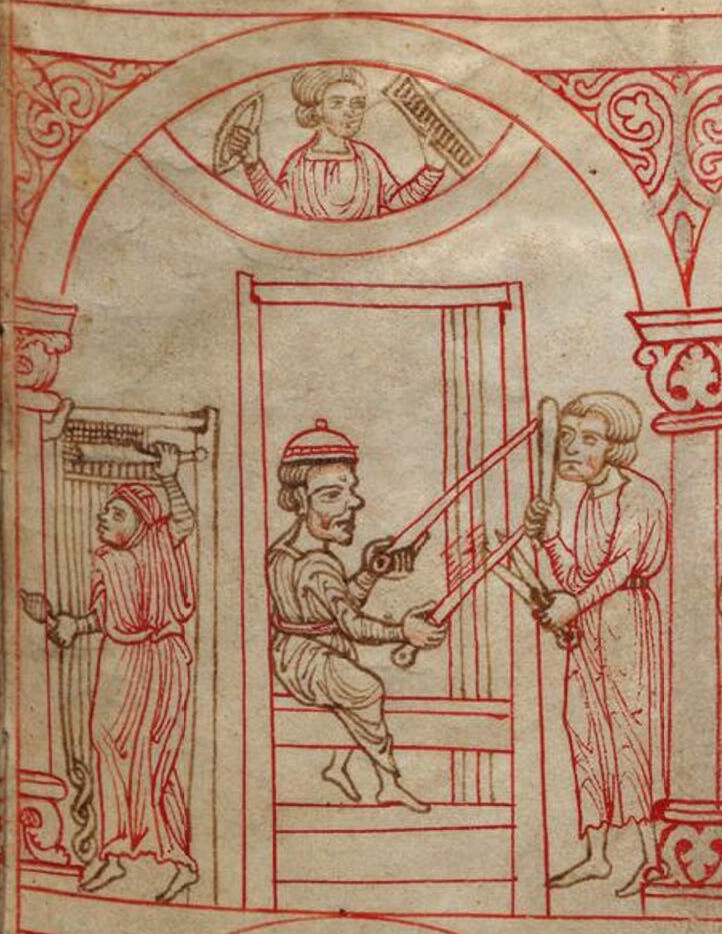Laurel Ann Wilson, Center for Medieval Studies at Fordham University
Volga to Vinland: Early medieval dress & textiles 9 November, 2024
The advent of the horizontal loom in Europe, which dates to the early eleventh century, led to the development of a different kind of cloth industry. This “grande industrie” and the fine woolen broadcloth which was its main product were among the primary catalysts for the enormous social and economic changes often referred to as the Commercial Revolution.
The importance of this later industry, however, has often led historians to overlook the existence of the European cloth industry which flourished in earlier centuries. The early medieval cloth industry was on a smaller scale than the grande industrie, depending more on individual artisans, primarily women, using warp-weighted looms. When the horizontal loom began to take hold, the warp-weighted loom did not disappear. Instead, it continued to be used by, and identified with, women. This paper will examine both the early medieval cloth industry and the cottage industry which later developed from it. Dr Wilson hopes to shed some light on what she believes to have been an entire under-the-radar women’s industry, which continued long after the development of the horizontal loom.

Österreichische Nationalbibliothek, ÖNB Cod. 507 f. 2r
